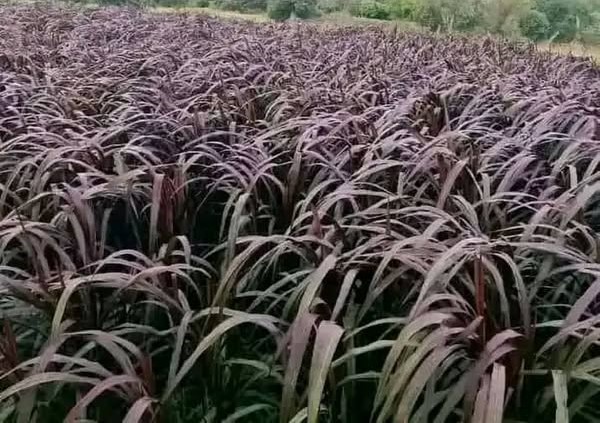The Australian Red Napier grass is slowly gaining popularity in Kenya, with farmers optimistic that it could transform the dairy sector thanks to its high protein content.
While the fodder is said to have superior characteristics compared to traditional varieties, its adoption in Kenya remains low primarily due to lack of planting materials and knowledge, among others.
Githaiga Kihara, a farmer in Nyeri, is among the few farmers in the country growing the fodder in large scale.
Speaking on Citizen TV’s Kenya’s Gold program, Githaiga revealed that the Australian Red Napier grass is a game changer and has superior characteristics, including a high protein content of over 20 percent.
“Presently in Kenya and across the world, this is the only Napier which has the highest crude protein. Its protein content ranges from 20 to 25 percent depending on the time you harvest it,” he stated.
The MOO Fodder Supermarket founder explained that any fodder with a protein content of over 20 percent is good for dairy farmers as proteins help in high milk production.
The farmer adds that Australian Red Napier has more biomass than most other fodders, noting that its biomass ranges between 180 and 200 metric tonnes per acre per year compared to the regular Napier grass, which produces between 50 to 70 tonnes per acre annually.
KALRO releases new high-yielding, disease-resistant potato variety
“This is a Napier that you harvest between 6 to 8 times per year which means you can support 10-15 cows on one acre of this,” he added.
The fodder can also be used to feed Dorper sheep and can also be processed into pellets for chickens.
According to Githaiga, Australian Red Napier can also be processed to silage to prevent loss of proteins after harvesting.
How the journey started
After transitioning from crop production to dairy farming, Githaiga encountered challenges as his herd of goats rapidly multiplied.
The resourceful farmer found that his 1.5-acre farm in Mukurwe-ini, which also housed avocado and macadamia trees, could not produce enough fodder.
Determined to find a solution, he embarked on extensive research to sustain his growing herd. He discovered brachiaria grasses and purchased his initial seedlings from Kalro Katumani in Machakos County.
Astonished by the benefits of brachiaria grasses, the farmer began sharing his findings on Facebook. His posts sparked widespread interaction, with many farmers praising brachiaria as the best fodder in the world due to its high crude protein and nutrient content.
One comment inquired if Githaiga could sell some of his brachiaria, igniting a light-bulb moment. He realized the potential of selling his high-quality fodder.
His passion for premium fodder grew over the years, leading him to add new varieties to his collection.
Today, Moo Fodder Supermarket offers multiple varieties of brachiaria and other high-quality fodders, helping farmers achieve optimal livestock nutrition and productivity.








